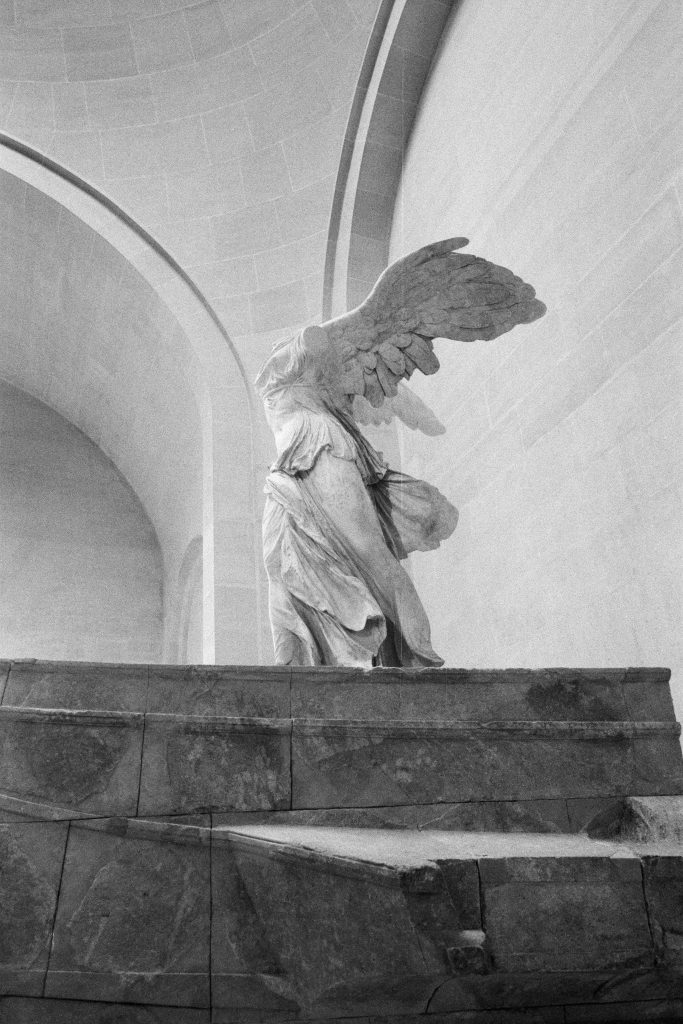Table of Contents
The Art of Sculpting in Marble: A Timeless Craft
Sculpting in marble is one of the most revered and demanding forms of artistic expression. From the classical masterpieces of Ancient Greece to the Renaissance icons, such as Michelangelo’s David, marble has been the preferred medium for sculptors aiming to achieve both permanence and beauty. This essay will explore the process by which sculptors work with marble, from the selection of the stone to the techniques involved in shaping it into a finished masterpiece. The essay will also discuss the historical significance and challenges associated with this unique medium.

Photo by Pexels
Historical Context of Marble Sculpting
Marble, a metamorphic rock composed primarily of calcite, has been used for artistic purposes for millennia. Its history as a material for sculpture is deeply intertwined with the artistic traditions of ancient civilizations. In Ancient Greece and Rome, marble was prized for its durability, translucency, and fine grain, which allowed for the creation of lifelike figures. Sculptors such as Phidias and Praxiteles in Greece, and later Roman artisans, honed their skills to a degree that left an indelible mark on Western art.
During the Renaissance, marble experienced a revival as artists like Michelangelo and Donatello sought to imitate and surpass the achievements of antiquity. Michelangelo famously believed that each block of marble contained a statue waiting to be released, and his process reflected a deep reverence for both the medium and its potential. Even in modern times, marble remains a material of choice for sculptors looking to create works of lasting significance.
The Selection of Marble
The sculptor’s journey begins with the selection of the marble itself. Not all marble is created equal, and its quality can vary depending on factors such as color, grain, and purity. Carrara marble from Italy, for example, is among the most famous varieties due to its fine grain and pure white color. Its consistency makes it a favorite of many sculptors, both historically and in the present.
When choosing marble, a sculptor must also consider the block’s size, shape, and any natural imperfections such as cracks or veins. These can affect the final form of the sculpture and may require the artist to adapt their design to accommodate the stone’s characteristics. In some cases, a flaw in the marble may even inspire new creative directions, as the artist works to integrate or conceal the imperfection.
The Tools of Marble Sculpting
Marble sculpting is a labor-intensive process that requires both skill and patience. Historically, sculptors used chisels, hammers, rasps, and drills, many of which remain integral to the process today. While power tools have modernized some aspects of sculpting, many artists still rely on traditional hand tools to maintain a connection with the material and achieve the level of detail that marble allows.
The tools fall into three primary categories: roughing tools, refining tools, and finishing tools. Roughing tools like the point chisel are used in the early stages to remove large chunks of marble and give the block a general shape. These tools are often wielded with a mallet to carve away excess material quickly. Refining tools, such as flat and tooth chisels, allow the sculptor to define finer details, shaping the contours of the figure or design. Finally, finishing tools—which include rasps, files, and sandpaper—are used to smooth the surface of the marble and add texture.
The Process of Sculpting
The process of working with marble can be broken down into several stages, each requiring a different set of techniques. These stages generally follow a pattern from rough to fine, allowing the sculptor to progressively refine their work.
- Preparation: Before the first chisel touches the stone, the sculptor typically prepares sketches or even a clay model of the intended sculpture. This maquette helps the artist visualize the form in three dimensions and serves as a reference throughout the process. Some sculptors also use a pointing machine or a grid system to transfer measurements from the model to the marble block accurately.
- Roughing Out: This stage involves removing large sections of marble to establish the rough outline of the sculpture. The sculptor uses point chisels and large hammers to break off chunks of stone, a process known as roughing out. Care must be taken not to remove too much material, as marble cannot be replaced once it is carved away.
- Modeling: Once the general form is established, the sculptor moves on to more detailed work. Flat and tooth chisels are used to shape specific features, whether it be the curve of a limb or the drapery of clothing. This stage is slower and more methodical, as each cut brings the sculpture closer to its final form.
- Refining and Detailing: In the refining phase, smaller tools like rasps and files are employed to further define the sculpture’s details, such as facial expressions, hair, or intricate ornamentation. At this stage, the sculptor must work delicately to avoid chipping or breaking the stone, particularly in areas that require thin or fragile elements.
- Finishing: The final stage involves polishing and smoothing the marble to achieve the desired finish. Historically, sculptors used abrasives like sand or emery to polish their works. Today, modern sculptors often use sandpaper or power tools to achieve a high gloss. Some prefer to leave the surface slightly rough, creating texture that enhances the tactile quality of the piece.
Challenges of Marble Sculpting
Sculpting in marble presents numerous challenges, even for the most skilled artisans. Marble’s hardness makes it difficult to work with, requiring both physical strength and precision. A single misstep can ruin weeks or months of work, as marble is unforgiving to mistakes. Unlike clay or wax, where material can be added or subtracted at will, marble carving is a subtractive process—once material is removed, it cannot be restored.
The artist must also contend with the unpredictable nature of the stone itself. Natural veins, cracks, or variations in color may not be visible until the sculptor is well into the process, forcing them to adapt their original design. The technical demands of marble sculpting are further compounded by the medium’s weight, as marble blocks are often heavy and difficult to maneuver.
The Enduring Appeal of Marble
Despite these challenges, marble’s beauty and durability make it an ideal medium for sculptors seeking to create works of timeless significance. Its unique properties—especially its ability to hold fine details and reflect light in a way that gives the sculpture a sense of inner life—ensure that marble continues to captivate artists and viewers alike.
In conclusion, the process of sculpting in marble is a delicate dance between the artist’s vision and the material’s inherent characteristics. From the careful selection of the stone to the painstaking chiseling of form and detail, marble sculptors must blend technical skill with artistic intuition. Though it requires immense patience and precision, the results are often breathtaking, as marble offers a sense of permanence and grace that few other mediums can match.


No responses yet